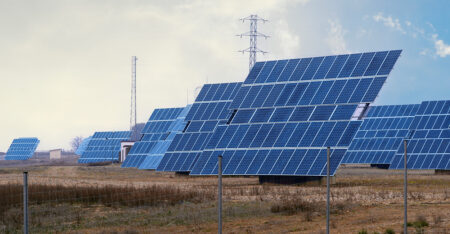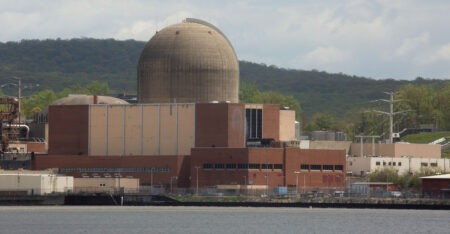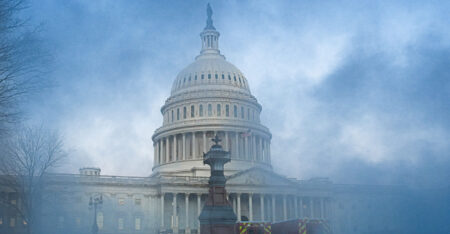The Department of Energy’s controversial conventional cooktops rule would introduce draconian energy-efficiency standards for gas stoves, making them unaffordable for many Americans.
Gas stoves are the top choice for many people, because the temperature can be quickly adjusted. It’s not surprising that the prospect of eliminating gas stoves is unpopular, and that Americans want the government to stay out of their kitchens.
The Energy Department’s proposal is based on authority provided via the Environmental Policy and Conservation Act of 1975. No matter that it was signed into law when America was dependent on imports of oil and natural gas, and that its goal was to reduce that dependence. Now, however, America is the largest producer of oil and natural gas in the world, and the 1975 law is obsolete.
The Department of Energy, although it will argue otherwise, met virtually none of the act’s minimum statutory requirements to justify its rulemaking.
For starters, the DOE missed the mark on the law’s “technological feasibility” provision. Bureaucrats are proposing the maximum technology feasible, or “max-tech,” compliance level for gas cooktops, which appears to be the first time it has proposed such a standard.
That means that gas stoves would have to consume 32% less energy per year in order to remain compliant.
By setting that requirement, more than 90% of gas cooktops would need to be redesigned by 2027, giving industry less than four years to reconfigure, test, manufacture, and distribute products in order to comply and remain competitive.
The 1975 law likewise requires the DOE to consider “any lessening of the utility of the covered products likely to result from the imposition of the standard.” Yet, the department’s proposed design alterations would change certain features that stove manufacturers have expressly noted as being intimately tied to performance.
By virtue of these major design overhauls, it’s no surprise that the standards are not “economically justified” either. The DOE estimates that manufacturers will spend more than $183 million over the next three years to meet the standard. Those costs would be passed along to the consumer through higher costs for the stove. The DOE acknowledges that, with its estimate that consumers can expect to pay more than $32 million annually in increased costs.
The department also estimates that over the course of 14.5 years (the average life expectancy for gas cooktops), its standards will save consumers a scant $22 in operating costs. That amounts to about $1.50 per year, or 12 cents per month—not nearly enough to make up for the higher cost of the stove.
Energy savings and climate effects are also negligible. The proposed rule is estimated to reduce site energy use, which is the energy directly consumed by a product at the location where it is used, by 3.4% over the next 30 years. And, according to The Heritage Foundation’s own calculations using a federal climate simulator model, the rule’s estimated reduction of 19.6 million metric tons of CO2 would result in a global temperature mitigation of 0.0009 degrees Celsius over the next century.
This rule, and others like it, also strip away consumer choice.
These standards make all kinds of presumptions about Americans’ preferences in order to justify them, including that Americans undervalue efficiency. In reality, consumers take into account a host of considerations—efficiency among them—when choosing what appliances to put in their homes.
So, by regulating based on one or two characteristics, and by prioritizing energy efficiency over other compelling factors, the government is stifling free enterprise, hindering broader innovation, and discouraging the production of products consumers want to buy—in this case, gas stoves.
Research indicates that energy-efficiency regulations disproportionately affect lower-income consumers, which is a consumer subgroup that the DOE targets as part of its analysis in the proposed rule.
Lower-income Americans already spend a greater portion of their after-tax incomes on basic necessities, and at a time when inflation remains consistently high across virtually all sectors of the economy, the last thing these families need are higher prices and more limited choices in terms of home appliances.
However, not all hope is lost.
While we play the waiting game to hear the Energy Department’s decision regarding this rule, the debate on gas stoves is heating up across the country.
Lawmakers in the U.S. House of Representatives have introduced the Save Our Gas Stoves Act, a bipartisan bill that would block DOE Secretary Jennifer Granholm from implementing the proposed regulations. Twenty-nine Democrats joined the GOP in voting to pass the amendment, pushing back against the Biden administration’s anti-natural gas agenda.
The 9th U.S. Circuit Court of Appeals on April 17 overturned a ban on natural-gas hookups in Berkeley, California. Berkeley was the first U.S. city to implement such a ban and was the catalyst for other states and localities to explore similar prohibitions on gas appliances.
While there are many states and municipalities still pushing to ban natural gas, it is vital for Americans to have access to affordable, abundant energy. Individuals and policymakers must continue challenging bans at the local, state, and federal level, and to promote policies that restore consumer choice.
Have an opinion about this article? To sound off, please email letters@DailySignal.com and we’ll consider publishing your edited remarks in our regular “We Hear You” feature. Remember to include the url or headline of the article plus your name and town and/or state.
Read the full article here














